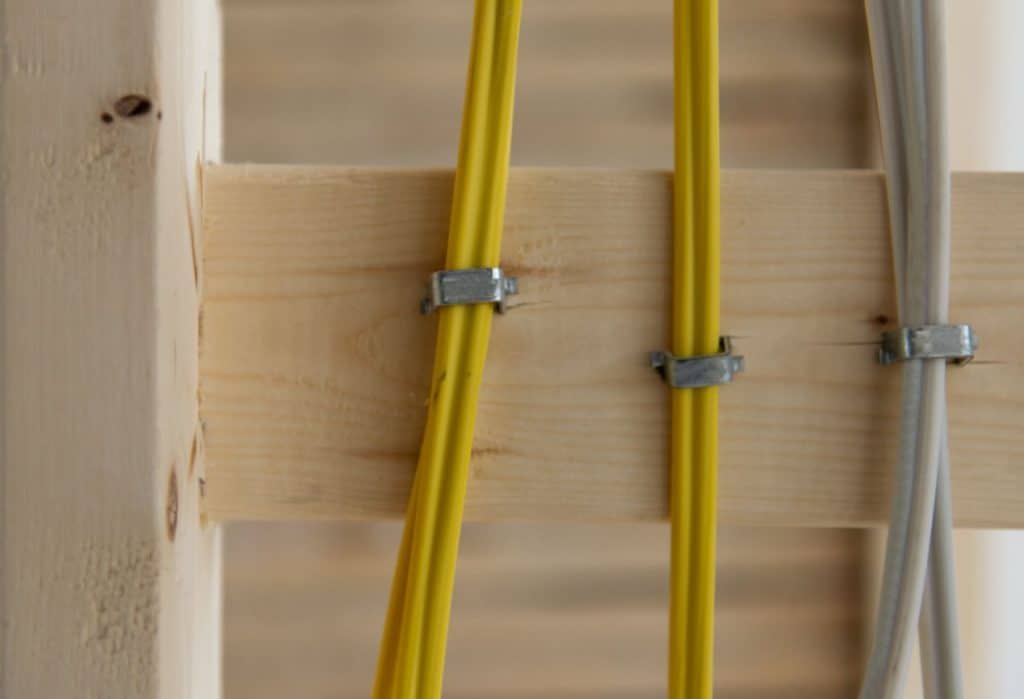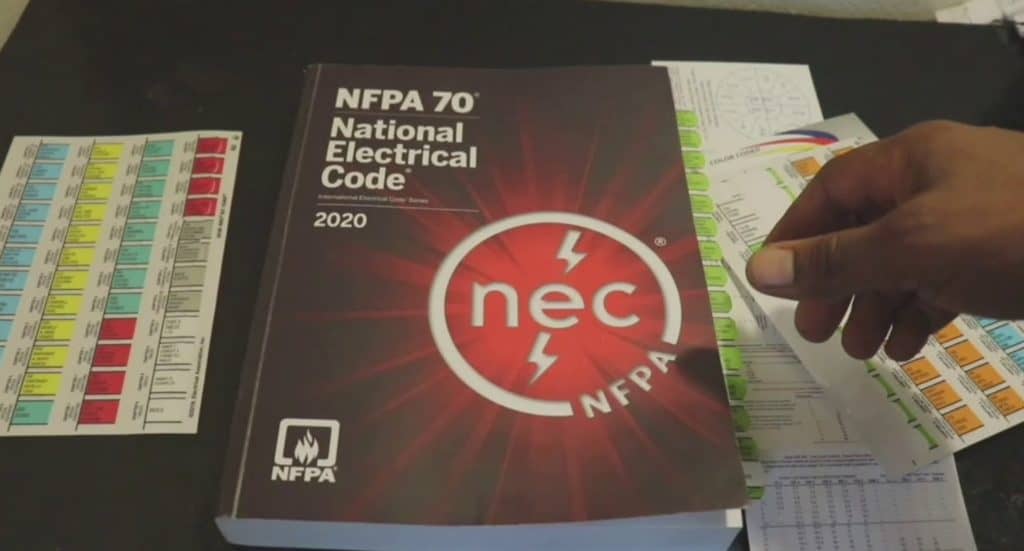The following information is based on the experience and electrical code interpretation of the writer for electrical wiring, and the National Electric Code (NEC). It is presumed the wiring is run in wood stud construction.
Readers should verify unfinished garage-specific requirements in their area before proceeding with any installations as many building departments and inspectors define the codes differently or have written additional codes for their jurisdiction.

Romex or NM cable (non-metallic-sheathed cable) is defined as “insulated conductors enclosed within an overall non-metallic jacket. (NEC 334.2)” This was first recognized in the 1928 NEC as a substitute for concealed knob-and-tube wiring and open wiring on insulators. Today, Romex is the most common wiring found in one- and two-family dwellings and townhomes, including attached and detached garages in wood-framed construction. Romex cannot be installed in commercial buildings.
Can Romex Be Exposed in a Garage?
The short answer is yes, however, there are requirements and exceptions in the electrical code. As Romex is one of the widely used electrical wires for common people, we recommend that it not be left exposed if at all possible.
If it must be left exposed it has to be protected from damage. (NEC 334.10 and 334.15) In garages with exposed wood studs, the cable is considered protected when run through bored holes between the studs, but cannot be run along the front face of the studs.
Note – Many building departments will not permit the cable to be left exposed when run perpendicular (horizontal through the studs) as they view this as a potential for physical damage because homeowners will hang items from the exposed wiring.
NEC Code for Electrical Wiring in Attached/Detached Garages

- Exposed NM cables are allowed to be run in “one- and two-family dwellings, their attached or detached garages, and their storage buildings” in the National Electrical Code (NEC 334.10 and 334.15).
- It must “closely follow the surface of the building finish or running boards” per NEC 334.15(A), and “closely follow the surface” means well-secured and flush to the wall.
- The code also specifies in 334.12(B) that “cable shall be protected from physical damage where necessary” and lists several types of conduit that are approved for protection as well as other methods.
Unfortunately, the electrical code does not define what areas are “where necessary.” Many building inspectors define it as any surface-mounted cable below 7’-0” above the floor to protect the wiring from accidental impact, but it is subject to different interpretations. CHECK WITH YOUR BUILDING DEPARTMENT!
How to Run Wiring in Garage
Typically, Romex is run in the wall cavities by stapling to the sides of the studs or through bored holes in the center of the studs. This is the best and most common way to protect the cable from damage (NEC 334.15 B). In this manner, the cables can be concealed within walls, floors, or ceilings (NEC 334.10, (3)).
How to Protect the Cable in a Garage
When run in bored holes or notches the cable must be protected from nails and screws if the hole or notch is less than 1.25″ from the face of the stud with a steel plate or bushing 1/16″ thick (NEC 300.4 A, (1, 2)).
The walls can then be covered with gypsum board (drywall) and the cables are protected from physical damage. You can also protect cables in a garage by running them in approved metallic tubing (metallic conduit).
Can You Use Insulation with Romex?
Yes, insulation in the stud cavities can be installed with the Romex in the walls. Insulation can be in contact with the sheathing but not the copper conductors. If any part of the sheathing is damaged, wrap the damaged section with electrical tape.
Note – Be careful when attaching the insulation to not damage any of the NM cables.
Does Exposed Romex Have to be in Conduit in the Garage?
No, it does not have to be in conduit unless you are running it on the surface of the gypsum board or finished wall or ceiling surface. Then the wiring should be installed in an approved conduit, thereby protecting from physical damage and meeting the intent of the electrical code.
Will Romex Overheat in Conduit?
It should not overheat in metal or flexible conduit. There have been some indications of cable overheating when run in Schedule 80 PVC that is exposed to the sun. However, PVC is a code-approved conduit (NEC 334.15, (B)) to protect the cable.
Benefits of Using Romex Wiring
The cable is easy to run in new construction and easily fished in partitions of finished buildings. The cable is flexible to easily pull around corners. It is easy to handle and the most common cable, 14-gauge and 12-gauge wires are lightweight.
Cons of Running Romex in Finished Garage
Using Romex in a finished garage, unless it is fished inside the wall cavity, needs to be inside a conduit to protect it on the face of the gypsum board, to meet the code requirements.
It is more labor and cost-effective to purchase a flexible metal conduit with the cables running inside or rigid metal conduit. You purchase the respective wires (red, black, white, green) as needed for the application and pull them inside the conduit.
Can You Run Romex in an Unfinished Garage?
Yes if the installation meets the code as described above in an unfinished garage.
FAQs
- Can Romex be Exposed in a Detached Garage?
Technically no but check with your local building department. And see comments above.
- Can Romex be exposed outside?
NO! Romex is not intended to be used on exposed exterior applications.
- How Long Does Romex Last?
The average life expectancy of electrical wiring is 50 to 70 years.
- Can Romex be used for extension cords?
No, it is not intended for that application.
Contents
